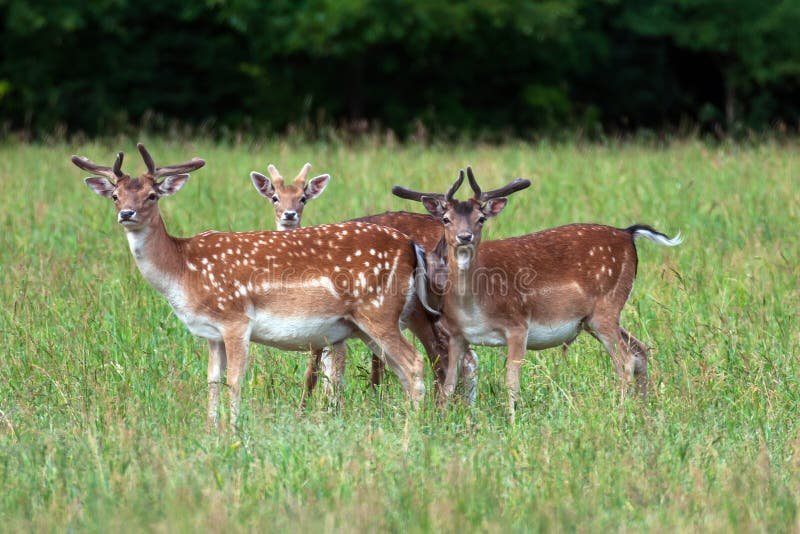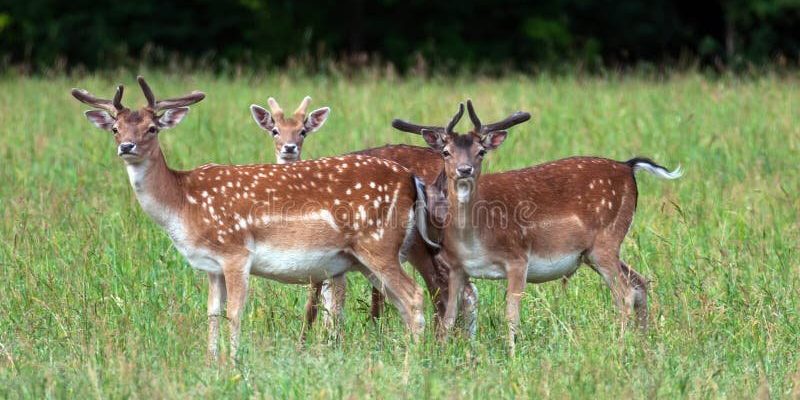
Fallow deer, known for their distinctive spotted coats and gentle demeanor, typically inhabit woodlands and grasslands across Europe and parts of Asia. Their maternal instincts kick in as soon as they give birth, which usually happens in late spring or early summer. This period is critical, not only for the fawn’s survival but also for the entire herd’s dynamics. Let’s dive deeper into the fascinating world of fallow deer parenting and see how these animals ensure their young thrive in the wild.
Fallow Deer Parenting: The Role of the Mother
Let’s start with the star of the show: the mother fallow deer. After about 230 days of gestation, she gives birth to one or two fawns. Right after giving birth, the mother instinctively chooses a hiding spot—a place that’s dense with vegetation and away from predators. This is crucial; it’s like picking the best spot in a crowded café to keep a baby quiet and unnoticed.
For the first few weeks, the fawn stays close to its mother, but it often spends time lying still in the tall grass, hidden from predators like foxes and eagles. You can imagine how a new parent might feel—the constant urge to protect while also letting their young explore. The mother returns frequently to nurse her fawn, ensuring it gets the nutrients it needs to grow strong.
Milk and Nutrition
Fawns rely on their mother’s milk for nourishment, which is rich in calories and essential nutrients. The milk helps the fawn gain weight quickly, preparing it for the challenges ahead. This phase is incredibly important, as the fawn needs to develop strength and coordination.
The mother will also start introducing her young to solid food gradually. Initially, young deer nibble on grass and leaves while still nursing. It’s like teaching a toddler how to eat solid food—an adventure filled with curiosity and a bit of messiness!
The Importance of Social Learning
As the fawn grows, the mother plays a vital role in teaching it social behaviors. Fallow deer are social animals, typically forming herds. Each interaction the fawn has with its mother and other herd members teaches it essential skills, such as how to communicate and avoid threats.
You might be wondering how a young deer learns these things. Well, just like children learn by watching their parents interact with others, fawns observe their mothers closely. From playful sparring with siblings to the way adult deer signal danger, these lessons are crucial for survival.
Communication and Signals
Interestingly, fallow deer have their own set of vocalizations and body language. For instance, when a mother senses danger, she might freeze or give a specific call that alerts her fawn to stay still. It’s like a secret code language only known to them. This communication fosters trust and builds a bond that helps both the mother and fawn navigate the wild together.
Protecting the Young from Predators
Predation is one of the biggest threats to fawns. As loving as a mother deer is, she knows that she can’t be everywhere at once. This is why she’s instinctively fierce when it comes to protecting her young. If she spots a potential threat, like a hungry wolf, she may lead it away from her fawn.
The fawn, trained to lie still and hide, uses its spotted coat as camouflage. This coat blends in with the dappled light filtering through the trees, making it less visible. It’s a classic example of nature’s design at work—survival through adaptation.
Behavior During Threats
In moments of danger, the mother deer will often exhibit protective behavior, such as standing tall and stamping her feet to warn off predators. It’s her way of saying, “This is my baby, and you’ve come too close.” This fierce maternal instinct is essential for the survival of the fawn, teaching it the importance of vigilance in the wild.
Life as a Young Fallow Deer
Once the fawn reaches a few weeks old, it starts to explore beyond the security of its mother’s side. This is an exciting time. The fawn learns to forage, test its legs, and engage in playful interactions with its peers. This play is vital; it’s not just fun and games. It helps build strength and coordination, much like how a child might play hopscotch or tag.
During this time, the bond between the mother and fawn remains strong. The mother still nurses the fawn regularly and maintains a watchful eye, ensuring it is developing social skills and survival instincts.
Transitioning to Independence
As the months pass, the fawn becomes more independent. By the time it’s around six months old, it’s usually ready to join the herd fully and fend for itself. It’s a gradual process, much like how young adults leave home to start their own lives. Even so, the mother continues to offer guidance and support, reinforcing the lessons learned throughout their early months together.
Challenges and Survival
Despite the nurturing nature of fallow deer, not all fawns make it to adulthood. Factors such as harsh weather, scarcity of food, and predation can put young deer at risk. But the way the mother raises her young equips them with the skills they need to face these challenges.
It’s a tough world out there. For every successful story, there are lessons learned through loss. This tough love approach shapes the fawn’s future, teaching it to be resilient and adaptable.
End of the Fawning Season
By late summer or early fall, the fawn is nearly independent. It will often stay with its mother for a little longer, but the lessons learned will guide its path. It’s a bittersweet moment for mothers—encouraging their young to be independent while also feeling the weight of letting go.
In the wild, how fallow deer raise their young is a beautiful example of nature’s nurturing side. From instinctual behaviors to social learning, these animals have a well-developed, caring approach to parenting. Just like human parents, fallow deer balance protection with the need for independence.
As you reflect on the challenges and joys of raising young ones in the wild, it’s clear that every part of this process is vital to the survival of the species. The bond between a mother and her fawn not only shapes individual lives but also contributes to the health of the entire deer population. It’s an ongoing story of resilience, adaptation, and, ultimately, the continuation of life.

